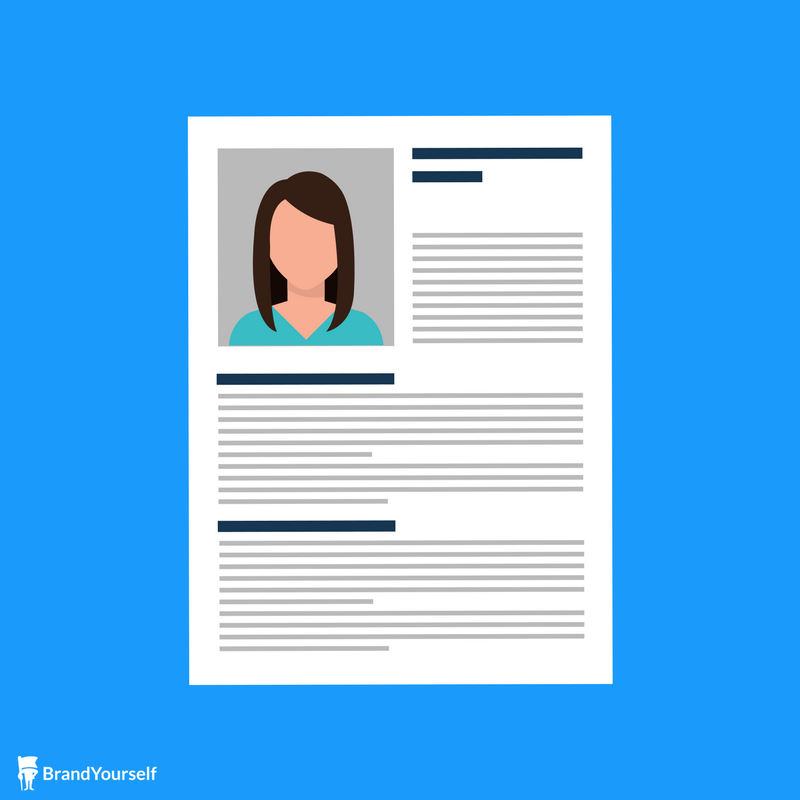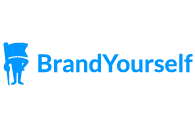
51 Items For Your Professional Career Portfolio + Examples
 A professional career portfolio is one of the most powerful tools you can use to win job opportunities.
A professional career portfolio is one of the most powerful tools you can use to win job opportunities.
Many people don’t know what to include in a portfolio. If that sounds like you, don’t worry. I’ve compiled a definitive list of options for you. Even if you aren’t in need of revamping your career portfolio right now, keep an eye out for the items below so you can start collecting them in the future. Trust me, doing this will make the career portfolio process a whole lot easier.
1. Demonstrate Your Education and Training
This is a crucial step when developing your career portfolio since it establishes high level qualifications that employers will want to see. Regardless of your industry or level of training and/or education, taking time to gather this type of information is helpful for potential employers and for yourself. When you combine this with an effective personal branding strategy you will see big results.
Putting what you have together now will save you time in the long run not only when working on your career portfolio, but when you put together other materials. One mistake that people often make is underestimating the education and training that they already have.
As a matter of fact, we see tons of career portfolio examples that miss out on this and it always ends up costing someone an opportunity somewhere down the line. This is easily the most important piece of an effective job portfolio, so don’t proceed until you’re sure you have everything applicable written down.
Even if you haven’t obtained a formalized degree in a specific area, this is a great chance to showcase the steps you’ve taken to master your area of interest in addition to working in the field. Far too often job-seekers will only write down their degree, or be discouraged about a lack of one. Don’t fall into this trap!
As a matter of fact, some of the best ways to differentiate yourself fall outside of your degree. If you’re in a profession where a college degree or certification is required, chances are everyone else who is applying has one too. However, when everyone else doesn’t elaborate about extra experience they’ve gained, you can jump to the front of the line by making sure your professional portfolio has plenty of relevant examples.
Displaying this expertise is a crucial aspect of all professional portfolios, so take some extra time to be sure you aren’t missing anything. If you are switching careers, this section is especially helpful in communicating the ways that you’re preparing for this transition.
- Brochures describing training events, retreats, workshops, clinics, lecture series
- Certificate of mastery or completion
- Charts or lists showing hours or time completed in various areas of study
- Evidence of participation in vocational competitions
- Grants, loans, scholarships secured for schooling
- Licenses
- Lists of competencies mastered
- Samples from classes (papers, projects, reports, displays, video or computer samples)
- Samples from personal studies (notes, binders, products)
- Syllabi or course descriptions for classes and workshops
- Standardized or formalized tests
- Teacher evaluations
- Transcripts, report cards
2. Demonstrate Your Work Performance
This section of your career portfolio is critical if you have already entered the workforce. Make sure that you gather as much information about the organization and the work that you provided. Keep track of your contributions and any supporting materials. Holding on to this kind of info not only helps you recall this kind of detail, but makes it much easier to show others what it is you’ve been working on and what that says about you.
Many people share their education and training in their professional career portfolio, but forget the performance aspect. This is how you can differentiate yourself when a hiring manager is viewing a handful of them all at once. They’ve seen every career portfolio example under the sun, so make sure the work experience you list is relevant and conveys the importance of your responsibilities!
- Community service projects
- Descriptive material about the organization (annual report, brochure, newsletters, articles)
- Job descriptions
- Logs, list or charts showing general effort (phone calls received, extra hours worked, overtime, volume of e-mail, caseload, transactions completed, sales volumes)
- Military records, awards, badges
- Employer evaluations or reviews
- Examples of problem solving
- Attendance records
- Letters of reference
- Organization charts showing personnel, procedures, or resources
- Products showing your leadership qualities (mission statements, agendas, networks)
- Records showing how your students, clients, or patients did after receiving your services (evidence showing your impact on the lives and performance of other such as test scores, performance improvement data, or employment and promotion)
- Resumes
- Samples from (or lists showing) participation in professional organizations, committees, work teams.
- Surveys showing satisfaction by customers, clients, students, patients, etc.
- Invitations to share your expertise (letters or agreements asking you to train, mentor, or counsel others, invitations to present at conferences or professional gatherings)
- Documentation of experience as a consultant. (thank-you letters, products, proposals)
3. Demonstrate Your Data Skills
No matter your industry, use data to your advantage in your career portfolio. While you never want to overwhelm your audience, make a point to save information that supports your claims. Whether these are samples of your work, graphs charts and tables, formal documents or photos from a conference, keep tabs on this type of support. These can also provide the benefit of breaking things up within your career portfolio so it’s not all text. A professional portfolio is being read by someone who is very busy. Making it digestible for them will help yours get some extra attention.
- Communication pieces (memos, reports, or documents, a public service announcement.
- Writing abilities as demonstrated in actual samples of your writing (articles, proposals, scripts, training materials)
- Evidence of public speaking (membership in Toastmasters, photograph of you at podium, speech outline, brochure for your presentation, speaker’s badge or brochure, blurb from the conference.) Also posters, photos, reviews of actual performances (dance, drama, music, story-telling)
- Data (graphs, charts, tables you helped to produce, testing results)
- Display or Performance materials (actual objects, or illustrations, or posters from displays)
- Computer related (data base designed, desktop publishing documents, samples from using the Internet, computer video screen pictures or manuals covers illustrating programs you use)
- Formal and technical documents as in grant or loan applications (include proposal cover sheet or award letter), technical manual
4. Demonstrate Your People Skills
Whether you work remotely or are client facing every day, you will at some point need to interact with other humans. Because of this, it’s necessary to show that you’re comfortable working with others in your career portfolio. Here are some simple ways to convey this:
- People and leadership skills (projects or committees you share, projects you initiated, photos of you with important people, mentoring programs, proposals, documents or strategies related to negotiation)
- Planning Samples (summary of steps, instruments used such as surveys or focus groups)
- Problem solving illustrated with various artifacts. Use figures or pictures showing improvements in products, services, profits, safety, quality, or time. Include forms and other paper products used to solve problems
- Employee training packets, interview sheets, motivational activities
5. Demonstrate Yours Tools Skills
When job-seekers are wondering what to include in a professional portfolio this is one thing that they often forget as well. Start with taking stock of what kind of tools you use in your current job. What tools will you need to use in your desired job?
Take some time to consider how this applies to you, then get to work on showing examples of your success with the tools specific to your area. Whether you use hammers or excel, gather reference materials that demonstrate your mastery of these tools and include them in your career portfolio! This can also be a great chance to be honest with yourself and identify a few things you might want to brush up on beforehand.
- Any artifact which shows technical skills, equipment, or specialized procedures used in your work.
- Paper documents or replicas of actual items including: forms, charts, print-outs (such as medical chart, financial statement or budgets, reports, emergency preparedness plan, marketing plan, customer satisfaction plan, inspection or evaluation sheet, financial or budget plans, spreadsheets, charts, official documents)
- Performance records (keyboard timing scores, safety records, phone logs, complaint logs, pay stub with hours worked highlighted, any record showing volume, amount, total time, response time, turnaround time, dollars or sales figures, size of customer database, organization chart showing people supervised)
- Technical directions, manuals, procedure sheets for specialized work, use of equipment, and detailed processes. This could include: sample pages from manuals, illustrations, technical drawings, blueprints or schematics, photos from the workplace, schematics or directions for tools or equipment, operation or procedure sheet
- Photos, video, slide-show, or multi-media presentation showing process or equipment.
- Actual items which can be handled in various ways: displayed in person one at a time or part of a display you set up
6. The Issue With Career Portfolio Examples
A common request you get from people who want to know what to include in a portfolio is if they can see career portfolio examples. While we do think using a template as a high-level starting point can be helpful for some, we often find that many people fall into a trap once they get their hands on some career portfolio examples. The reason for this is they start to create and work within an existing framework in a way that loses their unique spin.
When you look at something through the eyes of someone else or from a one-size-fits-all viewpoint, this is one of the main disadvantages. When you are trying to create something that shows off what you have to offer as an individual, we always advocate that you do as much of it yourself as you can. If your professional portfolio ends up looking like everyone else’s you’re not going to stand out at all.
Another reason why we discourage you from using someone else’s example as a reference when developing your own professional portfolio is because there really isn’t a right or wrong way to do it. As long as you stick with the items and guidelines we’ve mentioned above, you will be completely fine.
What To Do Now
If you haven’t already, bookmark this page or copy and paste the items above for your reference. These items will guide your efforts when building or tweaking a career portfolio for years to come.
Also, try not to get overwhelmed when you’re starting to think about the first steps towards building an awesome career portfolio. It’s easy to put it off because you feel like a lot is riding on how good it makes you look to potential employers. Try to brush that aside and focus on the things that you do naturally that can help tell the story about who you are and what you do.
Don’t overlook smaller projects that you’ve worked on or events that you’ve participated in. Even you if you don’t end up sharing that information in your career portfolio – it’s better that you keep track of these kinds of mini-experiences so that you have the language and visuals to describe them later on if they do work well with other elements that you decide to include in your professional portfolio.
If you want to learn more about how to take something like your portfolio and tie it together with a personal brand that helps you accomplish your professional goals, sign up for a free BrandYourself account. Our software will guide you step by step through the process of developing an online reputation and personal brand with resources you have (like a career portfolio) and ones you should create.
